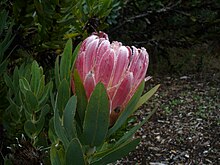I have some so I’m going to try this…ET
By Greenthumb On June 28, 2011
Ginger Roots
Have you tried growing ginger yet?
Ginger, known as Zingiber officinale or official ginger is a very easy herb to grow. Even better? You can probably find a start at the grocery store.
This is not the tropical ginger with flashy blooms that you see in Hawaiian photos, but rather the ginger root you use in gingerbread! If you grow your own you can use it fresh or even dry it.
If you can find an organic piece of ginger root with some eye buds forming (sort of like the eyes on a potato) you will have a ginger plant sooner rather than later.
Ginger Roots-See the Green Eye Buds?
Although it is easy to grow in a container or in the garden, Ginger has a few requirements for growing well.
- It likes warmth.
- It likes partial shade.
- It likes moist, rich soil.
If you can provide these things, you can grow your own ginger root!
Here’s the “Ginger Growing 4-1-1″ :
Find a nice ginger root (known as a rhizome) at the store. Look for eye bud swellings.
If you can get them, an organic rhizome is probably better because non organic roots may be treated with a growth inhibitor, and you may want to eat your root at some point! If you can’t find anything else, grab the non organic anyway and give it a try. Organic or not, I have never had one NOT grow!
If you have a large root with several eye growth buds, you can break the root into several pieces, each with an eye bud and plant them all!
Dig your spot in the garden, or use a good potting mix and fill your container nearly full. Plant the ginger just an inch or two beneath the soil, making sure the eye buds are pointing upward!
Ginger root with growth buds facing up!
Cover the root and water.
A 12″ pot can probably handle two roots, larger containers can handle another one or two. Plastic is best, roots can get ‘stuck’ in terra cotta and you may shatter pots when digging the roots.
Make sure you keep the rhizomes moist, out of bright direct sun and wind.
Compared to other herbs, Ginger plants are ‘slow pokes’ when it comes to growing. They will eventually reach a height of 2 feet or more in a container and may hit a height of 2 to 3 feet in the garden.
Ginger growing nicely!
You can harvest your rhizomes at any time after the plant has grown for several months, but the longer you can keep the plant growing the larger your harvest will be. You may notice the rhizome has some roots. You can just cut them off and use the ginger root, or save a piece (with a growth bud) for re-planting!
You may also notice new ‘buds’ forming at the top of the rhizome. These can be separated and planted for even more ginger!

New Ginger Babies!
Since I live where it’s cold in the winter I usually start mine in the greenhouse early in Spring, or in the house in February. Once night temperatures are above 60*F I set them out and let them grow all summer. Roots are harvested when the leaves start to die back in the fall- but before a frost. Frost kills the plant and can harm the roots.
If your ginger has been growing awhile you might find the roots have gotten quite a bit larger by the time you harvest!
If you don’t want to harvest just yet-
You can bring the whole pot inside and store it somewhere dry and cool, but not cold. Remember, it’s a tropical plant! Don’t water it. Don’t even look at. Next year when the weather warms you can add some nice compost, set it out where it’s it will be toasty and watch it begin growing again.
You can also keep it in a warm, well lit area and keep it as a houseplant.
Ginger Foliage and Root
Zingiber officinale does not produce a showy blossom like many tropical plants, and the way I usually grow mine does not allow time for the plant to bloom anyway. If you overwinter yours, or you live somewhere warm, humid and tropical you might get a few ‘plain Jane’ blooms from your Ginger plant.
Send me a picture if you do!

























Recent Comments